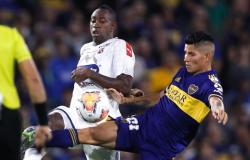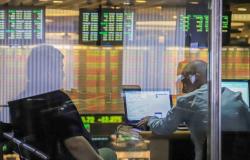Nike is taking a historic beating on the stock market, the likes of which have not been seen in a long time. The shares are down more than 20% after disappointing with their results. The company has maintained its revenues for the fiscal year 2024 and has fallen short in the fourth quarter, when the market consensus expected a slight increase in the figures. The company’s accounts are not only registering a massive sell-off of shares, but also a harsh rejection by analysts. The target price has fallen back to 2017 levels, placing it at $94. The worst thing is that the pain may have only just begun.
The legendary sneaker brand Nike is experiencing the worst day of its life on the stock market. And it has been contributing for more than a few years. More than four decades, after debuting in 1980. The punishment has come for not meeting investor expectations and for hinting that something is not going well in the company that has led the sportswear market since the mid-eighties, when the firm signed a certain Michael Jordan.
Not even during Covid and confinements had the company had such a bad time. Sport at home and then going out on the streets, with people crazy about running, took the company to historic highs. It also helped that prices triggered the company’s margins due to supply problems. The words of Matthew Friend, executive vice president and chief financial officer of Nike, have not helped to calm the waters either. “Our fourth quarter results highlighted the challenges we face and we are taking steps to reposition Nike to be more competitive and drive long-term sustainable and profitable growth in 2025.”
The executive’s words hide the worst nightmare for a textile firm: going out of fashion. The almighty Nike has rarely faced such a competitive and changing environment. The firm not only has to deal with its classic rivals, Adidas or Puma. Also with new players who challenge the Oregon company in its traditional dominance of running. Brands like On and Hoka are making a name for themselves among amateur runners..
Precisely, The Wall Street Journal How Nike missed the rise of running culture. New Balance, Hoka or Asics are turning to running clubs to present their new models of shoes, with gifts included. Runners can use four or five pairs a year. The first one may be free, but the next pair has to be paid for.
It is still an irony of fate because the origin of Nike was racing shoes. The company recognizes that it has lost ground in one of its strategic lines, but they hope to make a comeback with their new line for the Paris Olympic Games.
The derby with Adidas
Today’s declines are not just a financial slip or a market being too picky about the company’s numbers. There is a deeper problem. “Nike’s fundamentals are much worse than we thought,” wrote UBS analyst Jay Sole in a note to clients. And he warns that the business needs a “reset.” The analyst house is one of a handful of brokerages that have withdrawn their support for the company. JP Morgan and Morgan Stanley have also cut their recommendation from buy to neutral. And a good handful of other analysts have cut their target price. The market consensus is around $94, which has not been this low since 2017.. With today’s fall, the company has potential. Nike now has 21 equivalent buy recommendations, 20 holds and three sells among analysts tracked by Bloomberg.
And as if it were a derby, its great rival Adidas has reinvented itself and is experiencing a second youth, led by its new CEO. Bjørn Gulden, a former Swiss footballer, has found the key to success with a vintage formula. While the German brand explodes the market by updating old models, Nike’s top-selling models such as Air Force 1 and Dunk.
The praise for Adidas’ strategy works against Nike. John Donahoe, Nike’s CEO since 2020, is under fire after directing the company towards its own sales channel, without relying on other distributors. Coincidentally or not, Adidas has taken the opposite path, trying to rely on third-party stores. Adidas has accumulated a rise of more than 20% after Gulden took over the reins of Adidas.
Some analysts have criticized Donahoe’s leadership approach. Sam Poser of Williams Trading says Nike’s current top executives lack the “instinct and experience that the previous team had.” People are no longer racing to get Nike’s models; the company is at the back of the pack and racing to convince consumers to buy its products.






